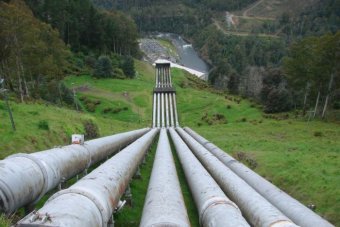On Wednesday the Tasmanian State Government released a report of recommendations with regards to renewable energy in Tasmania. The report was prepared by an energy security taskforce after Tasmania suffered a major power crisis in 2015/16 and will be 100% implemented by summer 17/18, as the Government have admitted a more ‘conservative’ approach is required, as per the ABC website.
This comes hot on the heels of news from the Tasmanian Government that they plan to be totally self-sufficient by 2022.
Renewable Energy in Tasmania – an overview
The 2015/16 Tasmanian energy crisis was due to low rainfall and the breaking of the Basslink power cable which joined Tassie to the mainland. It ended up sending the state into a spiral of insufficient energy which lasted six months and had myriad follow-on effects.
The energy security taskforce’s report noted that there aren’t currently any pressing concerns with regards to energy security in Tasmania, as dam levels are around 39%. It did, however, note that “more rigorous and widely understood framework” needs to be set up in order to better manage water storage. Given that Hydro Tasmania (an energy company owned by the state) has the unenviable position of trying to make profit whilst also addressing energy security, it’s a delicate situation. The report’s draft framework clearly states when Hydro Tasmania can “operate freely within its commercial interests and those occasions where it needs to take increasing steps to redress/avoid energy security risks”.
The report also recommends that they continue to hold the Tamar Valley gas plant in order to use it as a backup power station for the Tasmanian electricity grid, and, according to the report, to “provide clarity” to the Tasmanian gas market.
Tasmanian Energy Minister Matthew Groom praised the report, advising that there is “no doubt” Tasmania needs to adopt a more conservative tack when dealing with energy security.
Hydro Tasmania were also happy with the recommendations, labelling them “robust and responsible”.
These are good steps towards solving the renewable energy challenges in Tasmania and will go a long way to preventing a repeat of the energy crisis.
Tasmania – 100% Renewable Energy by 2022

The State Government have announced a plan to invest in two new wind farms (at Wild Cattle Hill and Granville Harbor), which will add 6-7% (of the total required energy) to Tasmania’s available generation. Given that Tassie is currently using 93% renewable energy, these wind farms, to be completed around 2020, should allow the state to reach its goal of 100% renewable by 2022 fairly easily.
What’s interesting is that they have decided to ignore battery storage for the immediate future – with the report noting “The Taskforce concludes that until there are significant decreases in battery costs and technology, or significant changes to current electricity pricing, adding a battery system represents a significant additional cost to the household that is not offset by reducing the cost of peak electricity”.
Let’s see how battery storage factors into future conversations, both in Tasmania and other parts of Australia.

